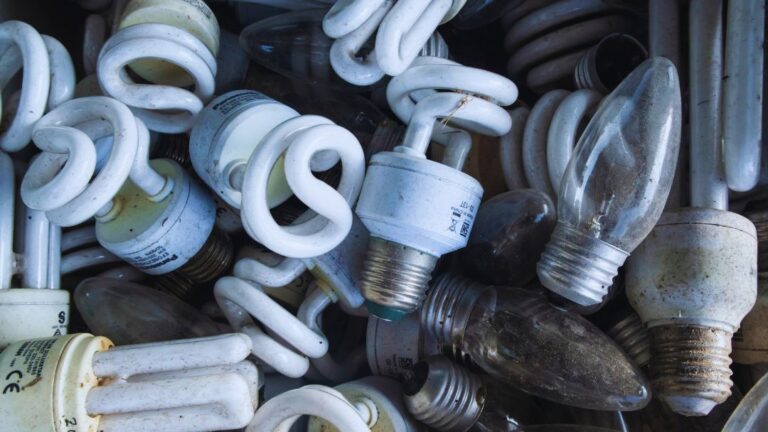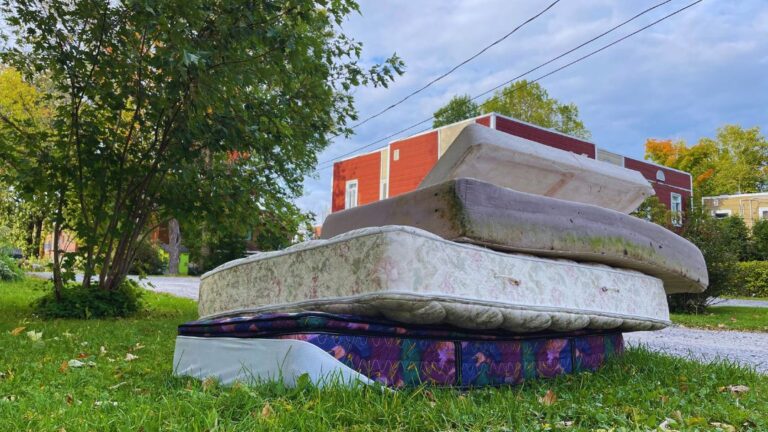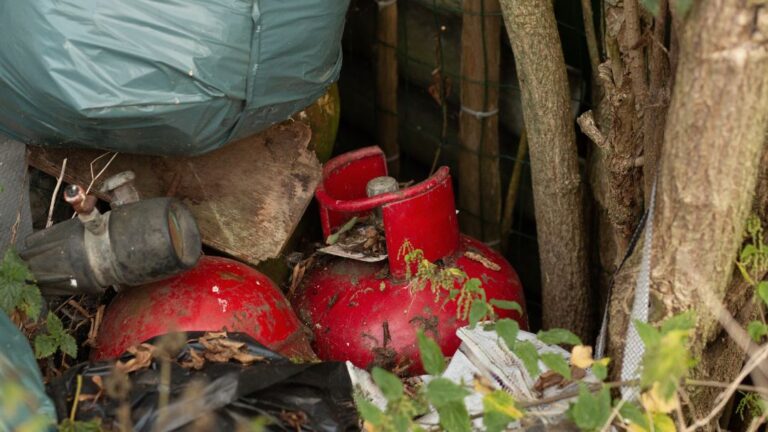In the daily operations of any business, waste is a fashionable reality of life. Whether it is empty packaging, office paper, food scraps, or other byproducts of manufacturing, one aspect of operational efficiency and sustainability that is often overlooked, is the management of those outflows.
Hazardous materials have appropriate guidelines and regulations in regard to their handling, but non-hazardous waste represents a different challenge and opportunity for businesses trying to minimize costs, maximize space, and improve their environmental footprint.
This article is your guide to what non hazardous waste is and how to develop, implement, and maintain the best strategies in non hazardous waste management in the operations of your business.
We are going to understand why effective management is important and provide smarter solutions like CTI’s effective waste compactors that can help simplify the process and decrease your disposal costs.
If your business is working towards being more efficient and responsible, you can no longer avoid addressing non hazardous waste; it is a decision that must be made.
Non-Hazardous Waste: Definition and Examples
So how do we define non-hazardous waste?
Non hazardous waste can be defined as waste created by an industrial, commercial and institutional activity that does not pose a direct and/or substantial risk to the health and safety of the public or the environment.
Non-hazardous waste is not flammable, corrosive, reactive, or toxic.
However, it is very important to separate waste types clearly. If on identification, you incorrectly identify hazardous waste as non hazardous waste, you will be left with potentially significant legal and environmental ramifications.
For insights into managing potentially problematic waste streams, see: How To Deal With Household Hazardous Waste Disposal?
Here are some common forms of non-hazardous waste generated by companies are the familiar trade waste streams across all sectors.
| Waste Category | Examples | Common Generating Sectors |
| Paper & Cardboard | Office paper, junk mail, newspapers, magazines, cardboard boxes, packaging | Offices, Retail, Manufacturing, Warehousing |
| Plastics | Bottles, containers, packaging film, plastic strapping, shrink wrap | Retail, Hospitality, Manufacturing |
| Glass | Bottles, jars (often requires separate collection) | Hospitality, Retail, Food Service |
| Metals | Steel and aluminum cans, scrap metal (non-contaminated) | Manufacturing, Food Service |
| Organic Waste | Food scraps (pre- and post-consumer), yard trimmings, coffee grounds | Hospitality, Food Service, Offices |
| Wood | Pallets, crates, scrap wood (untreated) | Manufacturing, Warehousing, Retail |
| Textiles | Uniforms, linens, fabric scraps (non-contaminated) | Hospitality, Healthcare, Manufacturing |
| General Office/Retail Waste | Non-recyclable packaging, mixed materials, general refuse | All sectors |
Keep in mind that even in the non-hazardous waste category there are different streams of waste.

For information regarding liquid industrial waste see: 7 Essential Liquid Waste Disposal Methods for Industrial Facilities
The Importance of Non-Hazardous Waste Management
Ignoring or not effectively managing your non-hazardous waste can be detrimental to your business as it can lead to operational and financial pain in many ways. On the other hand, creating an effective strategy to manage non-hazardous waste can have lots of benefits:
- Real Cost Savings:
Waste disposal can be costly, particularly if you landfill waste (this can be through tipping fees & hauling costs). The less waste you produce and the less frequently you have your waste picked up means you are cutting down on costs. Clean, segregated recyclables, if properly handled, can even generate income in some circumstances.
Your waste management plays a role in preventing potential fines associated with waste left in the wrong place or overflowing bins.
- Greater Environmental Responsibility & Sustainability:
Reducing what you send to landfill saves much-needed landfill space in your local area and reduces the environmental impact with decomposition (such as methane gas generated by landfilling). Recycling conserves natural resources and uses less energy when compared with extracting or manufacturing new products from virgin materials.
Creating a culture of sustainability and environmental responsibility for your organization will improve your brand image and resonate with more and more environmentally conscious consumers and business partners. For more on the environmental impacts of recycling check out reputable sources like the EPA overview of recycling and their related materials.
Discover more on how recycling efforts contribute positively: How Waste Recycling Reduces Environmental Pollution ( & How to Do it Correctly)
- Regulatory Compliance:
While regulations for non hazardous waste are generally less stringent than for hazardous materials, local ordinances regarding waste storage, collection frequency, and recycling mandates still apply. Proper management ensures compliance and avoids penalties.
- Space Optimization:
Bulky, unmanaged waste takes up valuable real estate – whether it’s floor space in a warehouse, the back-of-house area in a restaurant, or an exterior loading dock. Effective management, particularly volume reduction, reclaims this space for more productive uses.
Basic Approaches for Efficient Non-Hazardous Waste Management

Taking a solid non hazardous waste management plan and putting it into play involves several important strategies:
- Perform a Waste Audit:
You can’t manage what you don’t measure. A waste audit involves sorting and measuring how much debris, and type of debris a business generates over a period of time, records are kept by the company documenting the amount of waste generated doesn’t really give you the ability to see waste streams that are relevant.
This provides crucial data to identify major waste streams, pinpoint opportunities for reduction, and establish baseline metrics. Resources like guides on performing waste assessments can provide practical steps.
- Implement the 3Rs (Reduce, Reuse, Recycle):
- Reduce:
The most effective strategy is to prevent waste generation in the first place. This could involve switching to suppliers with less packaging, implementing double-sided printing policies, using reusable containers in break rooms, or optimizing production processes to minimize scrap.
- Reuse:
Before discarding items, consider if they can be reused internally (e.g., using scrap paper for notes, repurposing containers) or donated externally. Pallets, containers, and packaging materials often have reuse potential.
- Recycle:
Establish clear and accessible collection points for common recyclables like paper, cardboard, plastic bottles, and cans. Ensure bins are well-labeled and staff understands what goes where. Partner with a reliable recycling service provider.
- Effective Segregation:
It is completely counterproductive and costly to mix waste, particularly food waste and the potential contamination of recyclables with general waste.
For example; employing a careful separation system, along with clearly labeled bins for each of the streams (e.g. general waste, mixed recycling, cardboard only, food waste) will have a very positive impact on your recycling efforts.
- Invest In Volume Reduction Technology:
This is where you can really be effective while generating added savings, and for businesses that create larger volumes of compressible non-hazardous waste streams such as cardboard, plastic film, or even general mixed waste, this is a good outcome. From here we have another solution to discuss; waste compactors.
How do CTI Compactors Work?
Waste compactors operate by compressing waste materials with hydraulic or mechanical force to compress waste from a normal volume into a sealed container. Instead of having multiple large open-top dumpsters in your location that take up space and require more frequent empties, a compactor can compact waste into a much smaller size.
Reduce your waste volume and save on disposal costs with reliable compactors. Learn how CTI’s strong and reliable waste compactors can make waste management easier and more cost-effective for your business.
Why You Should Use CTI Compactors

- Reduce your cost:
Bundling waste allows for reduced waste pickups. You can cut trash disposal by up to 75% or more, depending on the type and volume of waste – depending on waste type and volume. The less pickup, the less waste disposal bills.
- Maximize your space:
Compacted trash takes up less space than loose trash. Compacting your rubbish provides you with more space that can be used for storage areas, operations, or parking.
- Reduce overall waste footprint, and improve efficiency & cleanliness:
Compactors are an enclosed system that will reduce litter, odors, and pest problems that come from overflow open bins, providing you with a more sanitary way to handle your waste. Your loading docks and waste areas will look and operate cleaner and more professionally.
- Increased Safety:
Liable waste is less likely to cause slips or trip hazards and less manual handling of large amounts of loose trash helps to decrease injuries. Lockable compactor containers also restrict dumping and/or scavenging by unauthorized personnel.
Take Control of Your Non-Hazardous Waste Today
Managing non-hazardous waste is not just a regulatory obligation; it is an opportunity. Understanding your waste streams, and implementing waste reduction and recycling programs.If you want your business to save in costs, efficiency, valuable space, and commitment to environmental sustainability, book a free 30-minute consultation with CTI experts to explore how our non hazardous waste management services deliver cost savings, operational efficiency, more usable space, and a demonstrable commitment to the environment you work.




